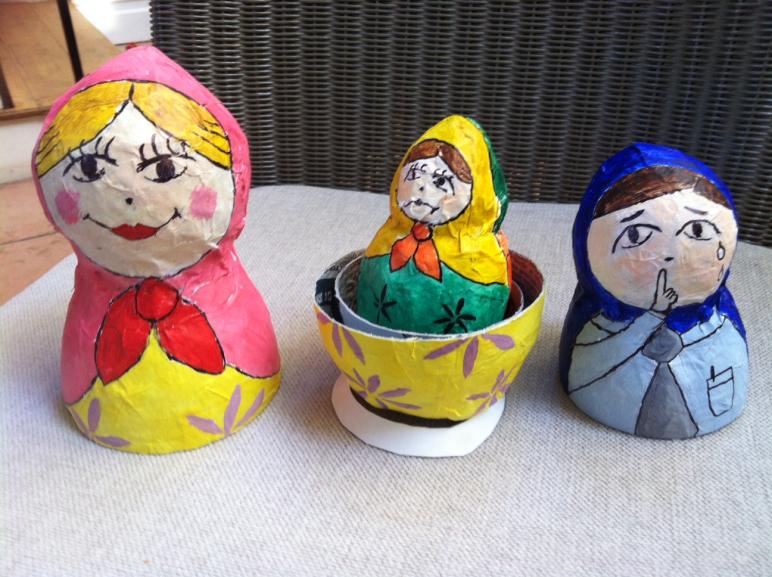What’s Inside?
Renata was born with ambiguous genitalia, and as a result spent much of her childhood and years as a young adult not knowing who she was. She went into detail with us as to how she was ‘kept in the dark’: told she could not go to school, forbidden from playing with her siblings and left totally confused about her identity. All she was told was that she was ‘cursed’ – I could not imagine what it must have been like for her- a lost childhood of confusion full of so many unanswered questions. Around the age of eighteen she moved to the UK as a ‘He’- as that was what her father had convinced himself she was. She found work and a place to live, but, still with no answers, she told us how she felt increasingly lost and desperate. Until one day she stumbled across a journal that changed her life. The journal contained an article about Hermaphrodites, and for the first time in her life she was able to identify with who she was. Finally she was able to grow into her skin and lead what turned out to be a very complicated but fulfilled life. As she repeatedly put it to us herself: ‘I can’t complain, I’ve had a wonderful life’.
In an attempt to reflect on this lady’s remarkable and unexpected story I decided to create three Russian dolls, each one representing a distinct stage in Renata’s life and each fitting together inside the other to create what she has become today.
Initially, I considered working from the outside-in; moving through the different stages of Renata’s life, until she finds her true identity. But I felt that the inner, smallest, doll couldn’t represent the extrovert, larger than life character Renata really was – it had to be the reverse. So I decided that the biggest, most impressive doll must represent her new- found, true identity, and that the other dolls would symbolise what is hidden inside and how she became who she is today.
Another thing I liked about the Russian dolls is their apparent simplicity at first glance. Someone who didn’t know what a Russian doll was would not expect to find so many more inside. Again, this reflects how, on first impression, Renata appeared to be a ‘normal’ and friendly lady, but behind this initial perception there was a complex story of vulnerability and courage. This imagery also ties in well with the doctor-patient consultation – it is obviously important as a doctor to realise that there is often more to someone’s illness/problems/story than it may at first appear.
I tried to keep the individual designs on the dolls simple, but at the same time with enough detail to give the audience a chance to think about what the story behind each of the dolls could be.
For me, the smallest doll represents the confusion and isolation that plagued Renata throughout her childhood. She told us how she literally didn’t know ‘what’ she was. The presence of both a boy and a girl and the clashing colours help illustrate the early confusion in her life, also the sad facial expressions and black flowers represent how Renata must have felt having been repeatedly told she was ‘a curse’.
The second doll represents a stage in Renata’s life which clearly had a huge impact on her. When she begun working in the UK she had still been persuaded that she was a man. She emotively told us how she wore a corset under her work shirt to push back her bust. It was a very moving account that really brought home to me the incredibly unique struggle Renata was left to cope with. The doll, with his finger to his lips, reflects how there was so much that was being kept secret. Renata was hiding behind someone she wasn’t, still totally confused and lost about who she was. The tears reflect how close she was to taking her life during this period of vulnerability.
The biggest and most beautiful doll represents Renata’s true self – what she became when she was finally able to feel comfortable in her own skin. It was clear how important this moment was to Renata. It totally changed her life. She brought down photographs to show us of when she first wore a dress and first got the chance to wear make-up. The final doll reflects this moment and the new person Renata became and continues to be today.
name has been changed for confidentiality, Renata gave permission to share her story.
Winner of First-Prize in the annual GP Creative Assignment Awards

I chose this piece as I believe that the issue with people being unable to express their true identity is still so poignant in todays society. The three elements demonstrate how emotionally challenging it can be for someone to express their true self, especially when influenced by external family or cultural pressures. In addition, I also like how the piece simply expresses that as doctor we must look beyond the “outer doll covering” of somebody in order to truly understand the patient and thus provide the most effective treatment that will suit the patient.